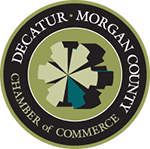In the Know: Inflation Hedging Strategies with Commercial Real Estate


With inflation at levels not seen since the early 1980s, many investors are left scrambling to ensure their assets and wealth are protected. The latest U.S. Bureau of Labor Statistics (BLS) report reflected an alarming 8.5% year-over-year Consumer Price Index (CPI) increase, the highest since January of 1982. This astounding inflation metric comes as no surprise when analyzing the total monetary supply in the United States. In January 2020, just $4.0192 trillion was in circulation while in November of 2021, that number skyrocketed to $20.354 trillion. These figures represent a staggering statistic; the U.S. government has printed 80% of the total monetary supply in the past two years. Investors are turning to real estate in order to provide a hedge against rampant inflation.
When looking at inflationary periods in the past, real estate property values and rent levels have increased during those periods. Since property values and rent levels are fundamental drivers of real estate returns, a natural inflation hedge is present in almost any cash flowing real estate investment. Conventional wisdom would suggest this is true due to the scarcity inherent with real property, long-term fixed rate debt generally associated with financing real estate assets, and the ability of property owners to increase cash flow by raising rent levels over time.
In addition to the principles discussed above, the U.S. economy is also dealing with dramatic increases in labor and material costs. This translates to elevated new construction costs with rent levels adjusting upward to hit investor return requirements. The idea of replacement cost ties in directly with this concept regarding the relationship between existing assets and new construction. When new construction prices rise, the value of existing assets increases accordingly due to the replacement cost of that asset now being greater than it was prior. Oftentimes, the exorbitant cost of new construction stifles development from occurring or significantly delays delivery. This issue further exacerbates the inventory shortage issue but bodes well for owners of existing property as supply is not able to keep up with demand.
With the end of rising inflation nowhere in sight, investors serious about diversifying and strengthening their portfolio should consider adding commercial real estate to their holdings. Many different asset types and investment approaches exist so speaking with a competent commercial real estate advisor will ensure the investor experiences success with the venture. For those already invested in commercial real estate, multiple strategies are available for implementation in today’s tumultuous market which lead to generating outsized returns. For more information about investing in commercial real estate or optimizing your current real estate portfolio, give the team at Parker Real Estate a call at 256-353-1112.


